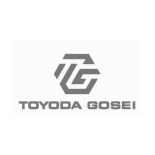How to write a great cv
Your CV will in most cases, be the first impression a recruitment consultant or employer has of you. In a competitive market, you need a good CV to succeed in securing a job.
It's the first step in the recruitment process so spend some time getting it right.
A good cover letter should always accompany your CV.
Your CV and cover letter should combine to create a picture of you and your career-to-date and illustrate why you are different from the competition!
With this successfully achieved you will secure yourself a place on the shortlist.
CV Structure
Personal Details
Start with your personal details. Full name and contact details including home address, all useable telephone numbers and email address. Avoid unnecessary details such as religious affiliation, children's names etc. Include language skills, professional memberships and military service if relevant. A picture is always nice for the recruiter to remember you after the interview.
Education
Educational history and professional qualifications should follow, including names of institutions and dates attended. List these in reverse order, beginning with your tertiary qualifications, as they are more relevant for a potential employer. List secondary school results (these details will matter more if you have recently entered the job market, than if for example you left full time education 20 years ago).
Include computer skills and any other recent training / development that is relevant to the role you are applying for.
Goal/Objective
Briefly specify what you are looking for in your next position: Required Position, Position Type (contract or permanent), Last / Current Salary, Availability and Career Objectives. Include a list of your core strengths and skills.
Work Experience
The most widely accepted style of employment record is the chronological CV. Career history is presented in reverse date order starting with your most recent position. Achievements and responsibilities are listed against each role. More emphasis / information should be put on more recent jobs.
A functional CV can sometimes be more appropriate, for example if you have held a number of unrelated jobs. This presentation emphasizes key skills that can be grouped together under suitable headings. However, career progression and the nature of jobs held can be unclear with this type of CV.
Identify the contribution you made - Rather than just stating a list of duties you had, think about ways of demonstrating success in a particular role. Mention your achievements at work and any concrete results you achieved (in measurable terms if possible). For example, rather than writing, "designed company's web site," you could say, "designed company's web site, which increased company's overall product sales by 50 percent."
References
References can be listed or simply be "Available on Request".















